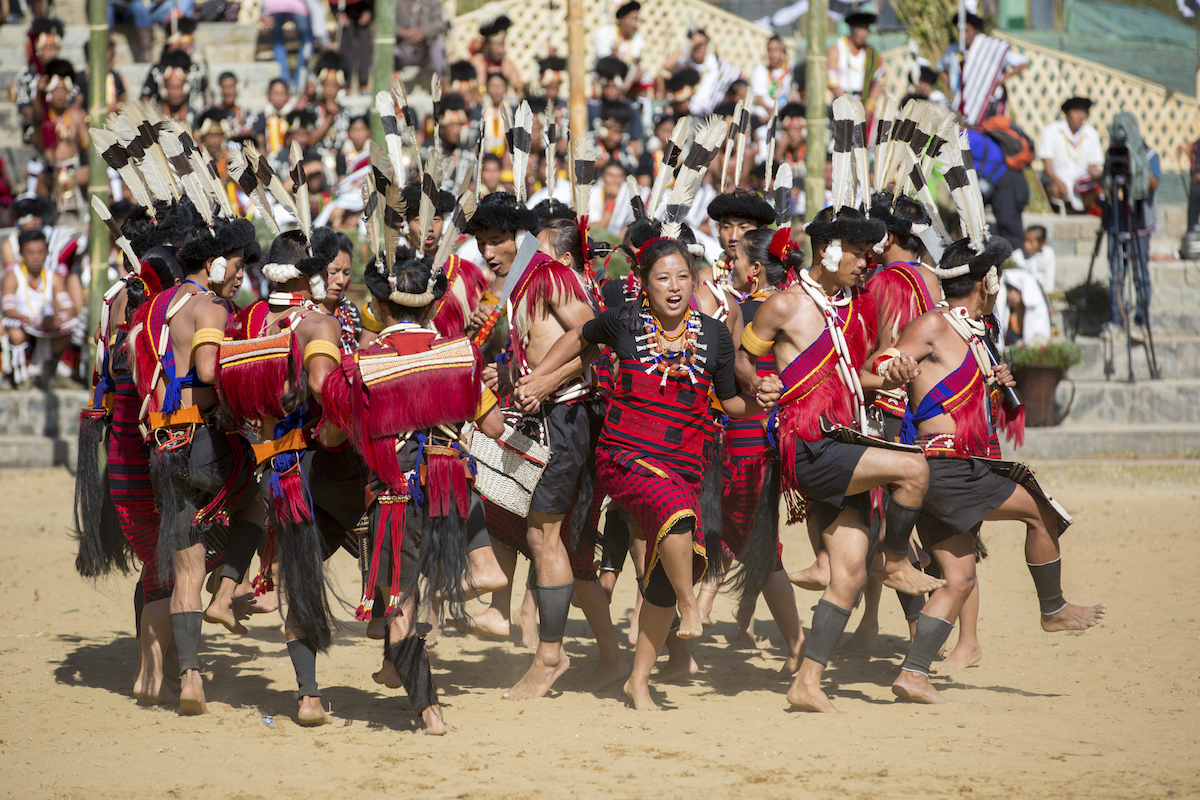During the colonial epoch, the highland Naga became among the best-known communities in British India with both administrators and early anthropologists documenting their cultural traditions and life ways, often so in meticulous detail. In this process, the Naga came to be popularly associated, in the world around, with two traits – namely, headhunting and communal feasting, dubbed as the Naga feast of merit.
Colonial reports abound with episodes of headhunting warfare, eerie “head-trees” on which decapitated and decomposed heads dangled, and ritual warrior dances following a successful “hunt”. Speculative theories about the origins of headhunting are many. Yet, a dispassionate understanding, including of its political, ritual and relic, and cosmic causations and consequences still awaits definite scholarship.
Here, I focus on the second popular trait – the Naga feast of merit, which I present as expressive of a communitarian philosophy that guided the constitutive connections between Naga economy and society, between generosity and merit, and between person, family, and village community. Until, alas, such feasts were abolished by overtly orthodox and zealous American Baptist missionaries. At considerable social and moral costs as that paved the way for the emergence of a Naga capitalist/elite class invested in unrestrained accumulation.
Advertisement
Researching the Naga in the 1930s, the Austrian ethnologist Christoph von Fürer-Haimendorf witnessed how the Naga highlands were dotted with thousands of monoliths. Upon inquiry, he found that each of them was erected to commemorate the fame and generosity of a feastgiver following him serving all villagers with as much rice, meat, and rice-beer as anyone could ingest. And not just once. To earn repute as a feast-giver required hosting multiple such feasts, usually spread out years apart. To be sure: to host a community feast required years of planning and preparation, including saving up paddy, and the acquisition and fattening of livestock.
Most of those monoliths were grand in size, and had been dragged from the jungle with sledges, canes, creepers, and the sweat of the village strong. Once erected, the monolith came to inhabit the merits and virtues of the feastgiver, in a way engraving his glory and generosity in the landscape, there for everybody to see and for generations to remember.
Inquiring further still, Fürer-Haimendorf learned that, among Nagas, one’s social status and standing did not derive from any mindless accumulation of wealth. Instead, one way in which social hierarchies formed was according to differential achievements of generosity; through ambitious villagers, that is, successfully acting as material providers and repositories of social life.
Actually, back then a barn overflowing with idle paddy was the epitome of immoral accumulation. Such wealth, and sheer wealth it was, had to be absolved at the altar of community, in return of which the feast-giver was bestowed with material symbols, such as specifically embroidered shawls, house carvings, and ultimately, with monoliths erected in his and his family’s name. Observed Fürer-Haimendorf, “The wealth of the ambitious was employed to provide food and enjoyment for the less prosperous members of the community, for at a Feast of Merit there was meat, rice and rice-beer for every man, woman and child in the village”.
Arriving at a particular village, he observed further, “Cross barge-boards rose from the gables of one of the houses, like the enormous antlers of some proud stag. Proud, too, must have been the owner of these wooden horns, for they showed that he had given several of those expensive Feasts of Merit whereby the Naga rises in social prestige and in the esteem of his neighbours.”
Seen as a historical and social institution, the feast of merit seemingly invoked contradictory principles, combining tendencies of economic redistribution and social differentiation, of both socialism and snobbery. More broadly, the feast of merit was, in part, constitutive of the Naga mode of production, which had two distinct dimensions – a material aspect founded on the effort to reap riches from the fields through stamina, strength, and skill in agriculture, and an ethical aspect grounded in a moral economy that successfully broke the spiral of accumulation by culturally enforcing redistribution through community feasting.
This breaking of the cycle of accumulation and the deflection of wealth was why the Naga feast of merit attracted such widespread attention, and caused fascination, especially in Europe. It offered a counter-thesis, another way of thinking, talking and doing economics, in a global context of rising disenchantment with the capitalist market in which success and status were measured, significantly so, in terms of socially detached and unrestrained individual accumulation. In such an economy, assets and wealth thus collected, usually represented either the end of the economic cycle or the basis for fresh investments directed at further material accumulation, not the launch, as it for long did among the Naga, of communitarian sharing and social indexing based on the cornerstone cultural value of generosity.
The feast of merit was among the first sacrifices foreign missionaries demanded from new Naga converts, interpreting them as an ostentatious wastage of wealth and its free-flowing rice beer as inducing immoralities of sorts. Today, feasting continues to be part of village life, but its guiding principles and occasions have changed with it now being confined to designated marriage and Christmas feasts.
Visit a Naga village today and one is likely to find granaries stored with barns of paddy, some of which are rotting and smell musky. Rats, mice, and other small lives gnaw through the plaited bamboo and siphon off grains daily. It doesn’t worry the owners. Most of the paddy is too old to eat anyway, brought in several harvests ago. This paddy, indeed, is no longer for eating but for storing and displaying. In the setup of contemporary economy life, to own paddy gone bad, to possess more than can possibly be eaten, communicates wealth and prosperity, and draws societal admiration.
This is a stark difference with the economic principles and moralities of the village past in which “excess paddy” was not permitted to rot, even less so was paddy gone bad worthy of praise, admiration and social ascendency. Per contra, the very purpose of accruing paddy was to redistribute it during a communal feast, and to so acquire merit and status.
Perhaps, then, it is in the disappearance of the Naga feast of merit that we find the cultural undergrowth for the wider societal shift from a traditional Naga economy that was significantly communitarian and steered by a moral consideration of sharing and generosity to a presentday economy of culturally blind accumulation, stark and rising inequalities, and competitive consumption.
Perhaps, too, it is in the abolishment and alteration of traditional and socio-moral principles and practices, and of which the feast of merit presents an important case, that we can trace and place the genesis and growth of capitalist values and relations in the hills.
The writer is a social anthropologist and teaches in the department of social sciences at Royal Thimphu College, Bhutan
Advertisement











